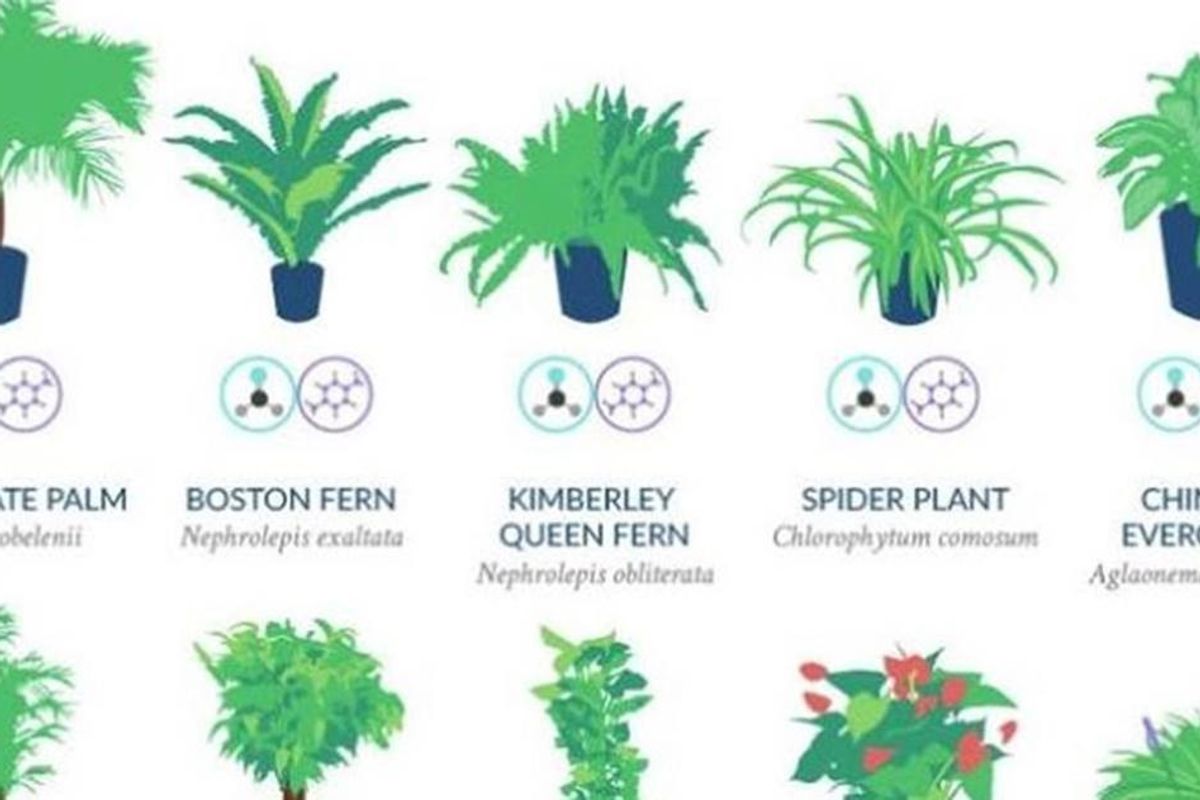
Certain people have an innate ability to remember random facts. They are great at trivia but can also be insufferable know-it-alls.
So why are some people better at recalling random facts than others? Researchers in Europe believe that it’s because their brains are more efficiently wired than other people’s.
“We assume that more efficient networking of the brain contributes to better integration of pieces of information and thus leads to better results in a general knowledge test,” biopsychologist Erhan Genc, from Ruhr University Bochum, said according to Science Alert.
Brittany Packnett Cunningham, an MSNBC contributor, activist, and co-host of Crooked Media’s “Pod Save The People,” wanted to harvest the mind hive on Twitter and find the most random fact that anyone knows.
“I mean RANDOM random,” she wrote.
The answers ranged from the utterly pointless to the truly amazing. There was also a generous helping of utterly disgusting answers thrown in the mix.
Almost every answer deserved the follow-up question: “Why in the world do you know that?”
Here are some of the most random responses to Brittany Packnett Cunningham’s question: “What’s the most random fact you know?”
Whatu2019s the most random fact you know?nnI mean RANDOM random.— brittany packnett cunningham. (@brittany packnett cunningham.)
1580180672
Most were utterly useless, but somehow still fascinating.
Snails can sleep for up to three years when the weather doesnu2019t suit them.— ud835udc9fud835udcb6ud835udcc3ud835udcbeud835udc52ud835udcc1ud835udcc1ud835udc52 (@ud835udc9fud835udcb6ud835udcc3ud835udcbeud835udc52ud835udcc1ud835udcc1ud835udc52)
1580180829
pic.twitter.com/IhCEcPpVJN— ud83cuddfaud83cuddf8All AmErican New Year (@ud83cuddfaud83cuddf8All AmErican New Year)
1580499864
most mammals have twice as many nipples as their species’ average litter size (e.g. humans mostly have 1 kid at a time, but 2 nipples), this is colloquially referred to as the ‘half nipple rule’nnexcept opossums, which for some reason have an odd number of nipples— Several Irate Bobcats (@Several Irate Bobcats)
1580184771
Muhammad is statistically the most common first name on the planet while Wang is the most common last name on the planet. But I still haven’t met anyone named Muhammad Wang.
Muhammad is statistically the most common first name on the planet while Wang is the most common last name on the planet. But I still havenu2019t met anyone named Muhammad Wang.— So There I Was… (@So There I Was…)
1580183727
The only word in the English language with all vowels+Y in alpha order is “facetiously”
The only word in the English language with all vowels+Y in alpha order is u201cfacetiouslyu201d— christy mcguire (FinishEdD!) (@christy mcguire (FinishEdD!))
1580181277
Queen Elizabeth is one of the only people in the world who doesn’t need a passport to travel.
Everyone else in the royal family does.
Queen Elizabeth is one of the only people in the world who doesnu2019t need a passport to travel.nEveryone else in the royal family does.— Connie B ud83dudc3b (@Connie B ud83dudc3b)
1580181326
NYE goes hard
NYE goes hard— Mud83dudd4a (@Mud83dudd4a)
1580184004
In DNA, mushrooms are more similar to animals than they are to plants.
In DNA, mushrooms are more similar to animals than they are to plants.— u2728 No More Mayors u2728 (@u2728 No More Mayors u2728)
1580181372
Some were pretty darn cool.
London Tube platforms have different tilings because when the Tube was originally built, a lot of people who used it were illiterate, and the different tilings helped them know what station they were at.pic.twitter.com/Yw8e04zCJA
London Tube platforms have different tilings because when the Tube was originally built, a lot of people who used it were illiterate, and the different tilings helped them know what station they were at.pic.twitter.com/Yw8e04zCJA— Sahil (@Sahil)
1580195864
Some were thought-provoking.
You’ve never seen your own face. You’ve seen a reflection, and you’ve seen pictures, but you’ve never actually seen your own face!
You’ve never seen your own face. You’ve seen a reflection, and you’ve seen pictures, but you’ve never actually seen your own face!— Ruby’s Granddaughter (@Ruby’s Granddaughter)
1580226748
When you look at a flower, some of the photons that entered your eye just ended a 100,000-year journey from the center of the sun.
Nobody else sees them.
Just you.
10% of THOSE will give up their energy to cause a chemical reaction that—literally—makes them a part of you.https://twitter.com/MsPackyetti/status/1221992423905202176 …
When you look at a flower, some of the photons that entered your eye just ended a 100,000-year journey from the center of the sun.nnNobody else sees them.nnJust you.nn10% of THOSE will give up their energy to cause a chemical reaction thatu2014literallyu2014makes them a part of you.https://twitter.com/MsPackyetti/status/1221992423905202176u00a0u2026— u2796Dustin Milleru2796 (@u2796Dustin Milleru2796)
1580187100
Elephants are the only animals other than humans who have something like funerals. They cover the dead elephant gently with leaves and branches, then stand around in a circle for hours making sad noises.
Elephants are the only animals other than humans who have something like funerals. They cover the dead elephant gently with leaves and branches, then stand around in a circle for hours making sad noises.— ud83cudf39Saffi u2721ufe0f (@ud83cudf39Saffi u2721ufe0f)
1580182116
There was a day when your parents put you down and never picked you up again.
There was a day when your parents put you down and never picked you up again.— Bradley King (@Bradley King)
1580186315
Others were disturbing.
Humans have a coccyx (aka a tailbone) which is the remnant of, you guessed it, a vestigial tail. One of our several vestigial features.
Humans have a coccyx (aka a tailbone) which is the remnant of, you guessed it, a vestigial tail. One of our several vestigial features.— Cat Noone (@Cat Noone)
1580181773
The act of touching glasses to cheers comes from medieval suspicions of poisoning each other, so youd slam mugs together to spill each others drinks into your own to show trust you werent trying to kill them. Europeans man…
The act of touching glasses to cheers comes from medieval suspicions of poisoning each other, so youd slam mugs together to spill each others drinks into your own to show trust you werent trying to kill them. Europeans man…— james beard (@james beard)
1580182190
Male dolphins can ejaculate as far as 10′ and with such force it can kill a human if that human was foolish enough to attempt zoophilic relations with dolphin.
Male dolphins can ejaculate as far as 10′ and with such force it can kill a human if that human was foolish enough to attempt zoophilic relations with dolphin.— dr. k still loves Richard (@dr. k still loves Richard)
1580180807
Artificial raspberry and strawberry flavoring comes from the anal glands of a beaver.
Artificial raspberry and strawberry flavoring comes from the anal glands of a beaver.— u2744ufe0fu2744ufe0f Stephanie Nelson u2744ufe0fu2744ufe0f (@u2744ufe0fu2744ufe0f Stephanie Nelson u2744ufe0fu2744ufe0f)
1580236997
And some could be helpful down the road. You just never know.
If you are attacked by a gator and your arm is in its jaws, push, don’t pull. If you can push the flap open at the back of its throat, water rushes in and it starts to drown and will open jaws, hopefully releasing you.
If you are attacked by a gator and your arm is in its jaws, push, don’t pull. If you can push the flap open at the back of its throat, water rushes in and it starts to drown and will open jaws, hopefully releasing you.— Anika Noni Rose (@Anika Noni Rose)
1580220908
The Phenomena: “The Doorway Effect”
When you forget the reason you enter a different room.
To retrieve the reason, walk backwards w/o turning around.
It can trigger the memory.
The Phenomena: “The Doorway Effect”nWhen you forget the reason you enter a different room.nTo retrieve the reason, walk backwards w/o turning around.nIt can trigger the memory.— CK (@CK)
1580185439
This article originally appeared on 02.06.20























